This article uncovers a list of top 10 foods for good mental health. Specifically, the best foods for mood-boosting, improving brain health and preventing cognitive decline.

Here, I answer some questions I often get asked as a dietitian and food expert:
- What are the top 10 foods for mental health that I can incorporate into my diet to keep my brain healthy?
- Which specific nutrients should I look for that will have a positive impact on my mood?
- What are some practical ways to add these nutrients to my plate?
Jump to:
- The Correlation Between Mental Health and Food
- Top 10 Foods for Mental Health
- 1. Salmon and Other Foods High in Omega-3 and other Healthy Fats.
- 2. Yogurt and Other Foods High in Probiotics and Prebiotics
- 3. Blueberries and Other Foods High in Anthocyanins
- 4. Pumpkin Seeds and Other Foods High in Magnesium
- 5. Dark Leafy Greens and Other Foods High in Antioxidants
- 6. Walnuts and Other Foods High in L-Tryptophan
- 7. Oatmeal and Other Complex Carbohydrates High in Dietary Fiber
- 8. Chickpeas and Other Foods High in B Vitamins
- 9. Dark Chocolate and Other Sources of Flavonoids
- 10. Coffee and Other Beverages With Caffeine + Antioxidants
- In Conclusion
- LOOKING FOR MORE NUTRITION EDUCATION?
- CHECK OUT THESE NOURISHING Dietitian RECIPES!
- 💬 Comments

The Correlation Between Mental Health and Food
There is a growing body of research studies showing a relationship between what you eat and your mood. And with mental disorders like depression and anxiety on the rise in the United States, an increasing number of people are showing interest in how nutrition impacts mental health and brain health.
Making changes to your diet by adding some of the brain foods from this list can provide many health benefits including improved cognitive health. Nutrients from food can help decrease anxiety and depressive symptoms, reduce brain fog, increase mental clarity, and improve cognitive function.
In addition, eating certain foods has been shown to support overall brain health and decrease the risk of diseases that cause memory loss, including Alzheimer's disease.
A common misconception is that sugary foods like ice cream make you feel better when you’re down in the dumps. But ultra-processed foods or too much sugar might just make you feel worse rather than better in the long term. If you want to optimize both your physical health and mental health, choose nourishing foods that support your body both short and long term.
One last note before we dive into the list. The right foods can serve as an incredibly powerful addition to a mental health treatment plan set by your provider. But if you are struggling with a mental health issue such as depression or anxiety, this list is not meant to be a treatment. While foods can be used in conjunction with other treatments, be sure to talk to your doctor or mental health provider before adjusting any medication or treatment plans.
Without further ado, here are the top 10 foods for mental health:
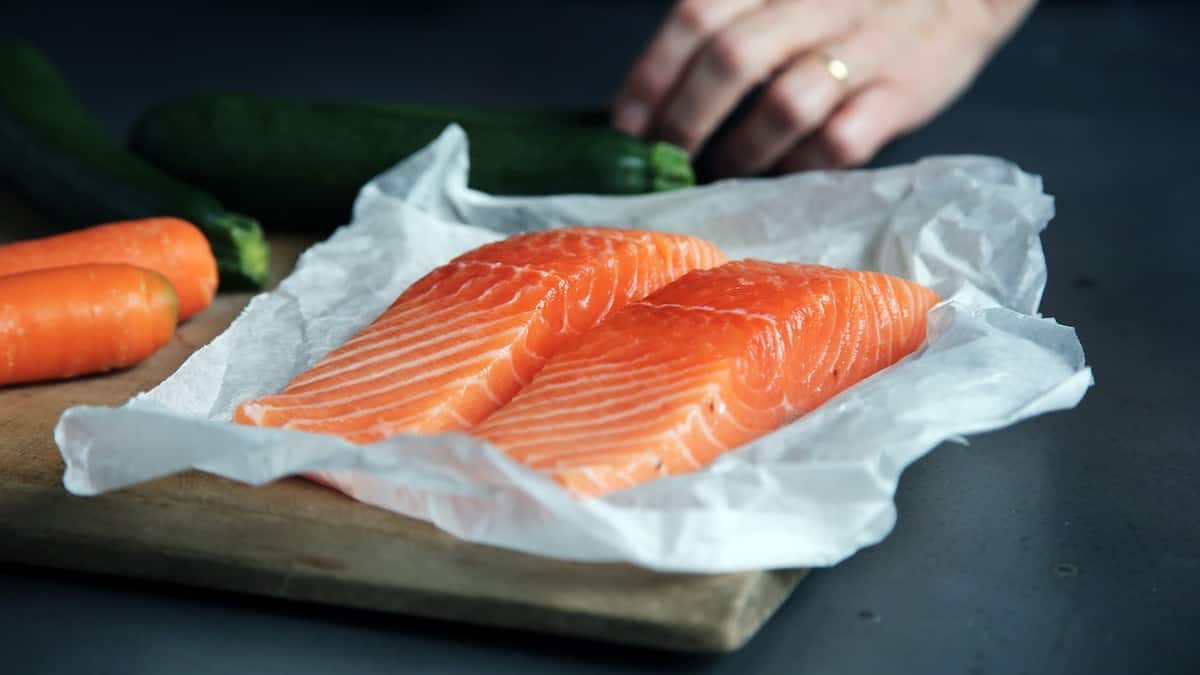
Top 10 Foods for Mental Health
1. Salmon and Other Foods High in Omega-3 and other Healthy Fats.
Omega-3s are unsaturated fatty acids. They are essential nutrients, meaning that your body can't produce enough of them so you have to get them from your diet. Omega-3 fats are a vital part of the membrane that makes up every single cell in your body, including your brain cells. They are also important for the health of the blood-brain barrier, the communication path between your brain and the rest of your body.
Interestingly, Omega-3 fatty acids are highly concentrated in the cells in your brain and eyes. So eating more Omega-3s like those found in oily fish and seeds is a great option for your eye health, too! So if you spend a majority of your day at a screen of any kind, it's important to get enough.
Research on Brain Health and Omega-3s
Research shows that Omega-3s could help relieve depression for a couple of reasons.
- They are anti-inflammatory. A diet high in pro-inflammatory foods has been shown to correlate to depression. On the flip side of that, a diet high in anti-inflammatory foods could have a positive impact on depressive symptoms and overall mood.
- Omega-3s are an important component of healthy brain cell membranes and can contribute to signaling between brain cells including the pathways for dopamine and serotonin production. You may know that dopamine is your "motivation molecule" and serotonin is your "happy hormone".
Foods High in Omega-3s
Examples of animal foods high in Omega-3 include tuna, oysters and egg yolks. Some plant foods that are an excellent source of Omega-3 include seeds like flax seeds, chia seeds and hemp seeds, algae oils, and nuts including walnuts, almonds, macadamia nuts, and pecans. Extra Virgin Olive Oil is high in oleic acid, another monounsaturated fat good for brain health.
- Fatty fish and egg yolks - Make a healthy Tuna Salad for lunch. Or eat salmon once a week by making a Salmon and Quinoa Salad or 10 Minute Crispy Air Fryer Salmon. Make hard boiled eggs early in the week to have as a snack or part of your lunch.
- Nuts/seeds - Add nuts and seeds to things like smoothies or oatmeal or make Hemp and Date Granola or 4 Ingredient Banana Oatmeal Cookies that contain nut butter. Top your favorite salad or soup with pumpkin seeds, almonds, or sunflower seeds.
- Extra Virgin Olive Oil (high in Oleic Acid): Make salad dressings using olive oil like this Balsamic Vinaigrette. Or use extra virgin olive oil in recipes like Roasted Carrots and Cauliflower or Smoky Mediterranean Chickpea Soup

2. Yogurt and Other Foods High in Probiotics and Prebiotics
An increasing body of research also shows a connection between gut health and brain health. Foods that are sources of probiotics and prebiotics are important for a healthy gut and in turn support a healthy brain.
- Prebiotics: a form of fiber that the good bacteria in your gut feed off and ultimately help keep your digestive system healthy. Specifically, the colon.
- Probiotics: live bacteria found in certain supplements and added to foods.
An easy way to remember the difference is that probiotics contain the actual bacteria and prebiotics are what those bacteria feed off. So you need the PREbiotics or else you are putting in the PRObiotics but not giving them any food! To truly keep your gut and brain healthy, you need both.
Research on Brain Health and Gut Health
Recent research from BMJ Nutrition, Prevention and Health suggests that prebiotics and probiotics may be useful as part of an adjunctive treatment for anxiety and depression.
Foods High in Probiotics and Prebiotics
Examples of foods high in probiotics include probiotics yogurt, some cottage cheeses, sauerkraut, and kimchi. Prebiotic-rich foods include whole grains, bananas, garlic, and onion.
- Probiotics-Rich Foods (yogurt, some cottage cheeses, sauerkraut, kimchi) -One way to get more probiotics is to add yogurt into your daily routine. I like to mix greek yogurt with Chia Pudding or Air Fryer Pears with Cinnamon. Eat cottage cheese with fruit or make Starbucks Egg White Bites that contain cottage cheese. Add fresh sauerkraut to a salad or add kimchi as a side dish over eggs or rice.
- Prebiotic-Rich Foods (whole grains, bananas, garlic, onion): make homemade granola or 4 Ingredient Banana Oatmeal cookies that give a double dose of prebiotics from both the oats and bananas. Many soup recipes contain garlic and onion. Smoky Chickpea Soup or Roasted Red Pepper Soup are great options.

3. Blueberries and Other Foods High in Anthocyanins
There are many reasons foods high in anthocyanins make the list of top 10 foods for mental health. The link between blueberries and brain health has to do with a polyphenol nutrient found in blueberries called anthocyanins.
Anthocyanins are water soluble flavanoids that act as antioxidants in the body. They are anti-inflammatory and give blueberries their color. Higher dietary intake of anthocyanins and other flavonoids such as those in blueberries and other fruits and vegetables may help to relieve symptoms of depression.
They are also neuroprotective, meaning they help to protect your brain by increasing brain-derived neurotrophic factor (BDNF) and insulin growth factor (IGF-1).
Research on Brain Health and Anthocyanins
Research from Psychiatric Times and Molecules journals has shown blueberries are linked to brain health. These are both peer-reviewed journals.
Foods High in Anthocyanins
Examples of foods high in anthocyanins include blackberries, purple grapes, purple sweet potatoes or carrots, ube (purple yam), and eggplant.
- Berries - blueberries and blackberries are both high in anthocyanins. Add blueberries in your Chia Seed Pudding, oatmeal, yogurt, or cottage cheese.
- Purple Grapes - snack on purple grapes. My favorite way is to add them to a Mediterranean Charcuterie Board or eat them frozen.
- Eggplant - make this Healthy Turkey Chili that uses eggplant to add a hearty flavor and for powerful nutrients.
- Purple sweet potatoes, carrots, or ube (purple yam) - next time you make Air Fryer Sweet Potatoes, opt for purple potatoes. Roast up some Carrots and Cauliflower for a savory side dish and swap purple carrots in to replace orange.
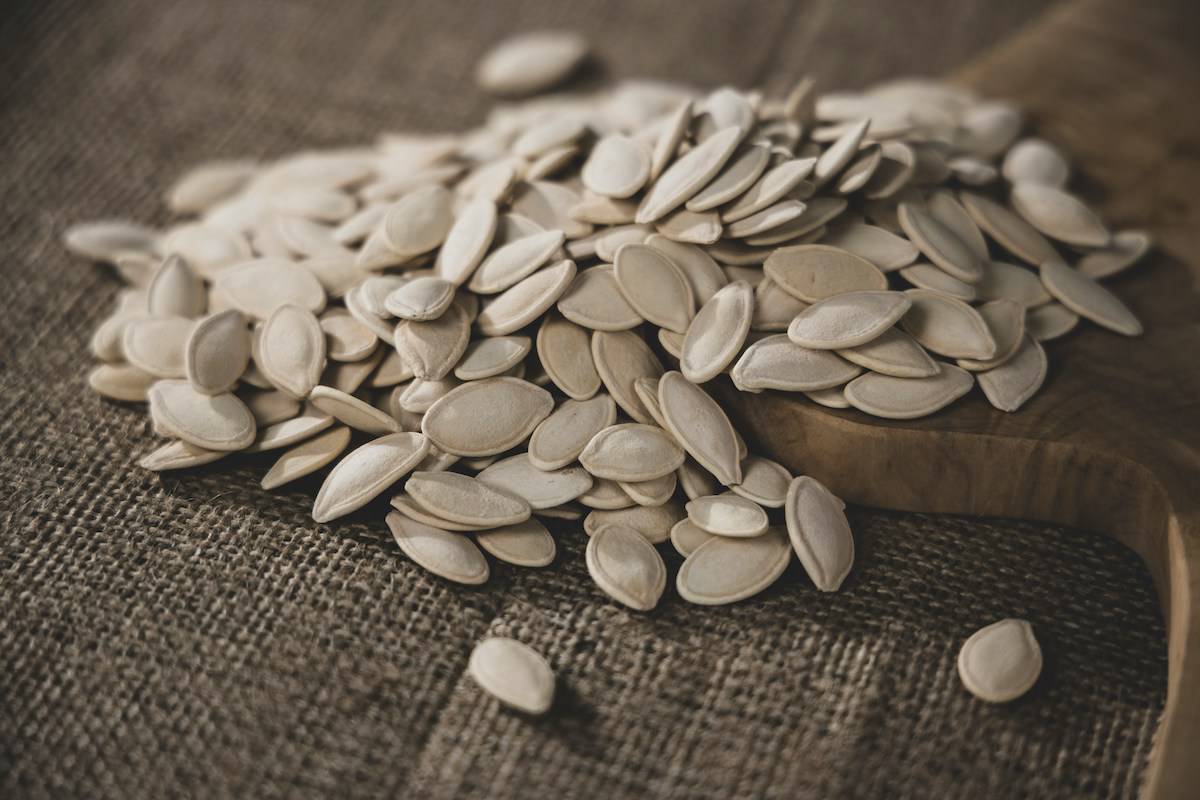
4. Pumpkin Seeds and Other Foods High in Magnesium
Magnesium is important for many functions in the brain, including healthy communication between brain cells. Studies have sldo shown that magnesium helps to regulate the nervous system.
Food High in Magnesium
Examples include cashews, almonds, pepitas (pumpkin seeds), spinach, peanuts, black beans, edamame and avocados.
- Pumpkin Seeds - throw pumpkin seeds on top of your favorite salad or add them to a bowl of greek yogurt with Air Fryer Pears.
- Some Nuts (cashews and almonds) - snack on nuts or make a decadent dessert using cashews or add slivered almond on top of your Chia Seed Pudding or greek yogurt.
- Peanuts - peanuts are technically legumes and are a good source of magnesium. The most delicious recipe I make using peanut butter and peanuts is Date Snickers. 4-Ingredient Oatmeal Cookies are a great way to use peanut butter, too. And of course, you can always bring a bag of peanuts or trail mix for a snack on-the-go.
- Beans (particularly black beans and soy beans or edamame) - add black beans as a side dish or to soups and chilis. Edamame is a perfect addition to a serve in a bowl with Air Fryer Salmon Bites.
- Avocados - add avocado to your salads, eggs, grain bowls, sandwiches or wraps. Or make homemade guacamole dip. Avocados is a great addition to smoothies for the nutrients and creamy consistency.
- Spinach - make Starbucks Egg White Bites with spinach and feta for an easy grab-and-go breakfast option throughout the week.

5. Dark Leafy Greens and Other Foods High in Antioxidants
Antioxidants decrease free radicals and reduce oxidative stress in the body. Oxidative stress is detrimental to the brain, and having foods high in antioxidants can help to protect it. Antioxidants are found in many fruits, vegetables, nuts and seeds, and beans.
Research on Brain Health and Antioxidants
A recent study published in Nutrients linked fruit and vegetable intake to a decrease in symptoms of depression, landing them a top spot in the list of top 10 foods for mental health.
Foods High in Antioxidants
If it's a plant, you can pretty much guarantee a food is high in powerful antioxidants. Examples include green leafy vegetables like spinach, spring mix, swiss chard and kale, fruits, beans, nuts and seeds and many spices and herbs.
There are a lot of easy ways to add antioxidants to your diet. The best way is to focus on adding fresh fruits, vegetables, nuts and seeds, and spices and herbs.
- Green Leafy Vegetables & Other Veggies - Dark leafy greens are full of an antioxidant called chlorophyll. add spinach, spring mix or kale to a smoothie or salad. Make a Mediterranean Bowl with Quinoa Spinach or an Arugula Salad with Beets and Goat Cheese. Or make Healthy Veggie Loaded Turkey Chili or a Lean and Green Egg Roll in a Bowl that is loaded with broccoli slaw, ready in 20-30 minutes, and tastes so good even the kids will eat it.
- Fruits - choose fruit for a snack or air-fry it for a delicious spin. Making Air-Fryer Apples or Air-Fryer Pears with Cinnamon takes only 10 minutes and tastes amazing. add it to things like 4-Ingredient Banana Oatmeal Cookies or on top of Chia Seed Pudding. Have a bowl of Cottage Cheese with Fruit or add fruit on top of greek yogurt and in smoothies. Make an Immunity Booster Shot that contains Vitamin C from the lemon and orange juices.
- Nuts and Seeds - Add nuts to your diet as a snack or in baked goods! Chia Seed Pudding or Hemp and Date Granola are easy ways to add seeds to your diet in a tasty way. Vitamin E is found in plant-based oils and nuts. These are all antioxidants that are important for the health of your brain.

6. Walnuts and Other Foods High in L-Tryptophan
You’ve probably heard of tryptophan around Thanksgiving because turkey is a good source of it. But did you know that nuts and seeds are also good sources of tryptophan?
Tryptophan is an essential amino acid that plays a role in the production of both serotonin and melanin. Serotonin plays a role in your overall happiness, mood, and brain health. Melatonin plays a role in sleep.
Nuts and seeds are great for overall health and brain health because they have tryptophan, fiber, and healthy fats that help with inflammation. They are also good sources of plant-based protein.
Research on Brain Health and Tryptophan
Recently, a study was published in Clinical Nutrition that showed that eating nuts was associated with a 17% lower risk of depression.
Foods High in Tryptophan
Examples of foods high in L-tryptophan include turkey, canned tuna, nuts and seeds including pumpkin seeds (pepitas), almonds, flaxseeds, and chia seeds.
- Nuts - add walnuts into oatmeal or yogurt or top your cottage cheese and fruit with almonds. Top a Beet and Arugula Salad with pistachios. Make homemade granola with pecans and almonds. Add nut butter to a banana or apples. Or make 4 Ingredient Banana Oatmeal Cookies that have nut butter.
- Seeds - add pumpkin seeds on top of a Salmon and Quinoa Salad or bowl of warm Butternut Squash Apple Ginger Soup. Make homemade granola with hemp seeds or chia seed pudding.
- Canned Tuna - make an easy Tuna Salad and add it to a sandwich or on top of greens with your favorite dressing.
- Turkey - Thanksgiving isn't the only time for turkey! Make these easy GF Turkey Meatballs or an Egg Roll in a Bowl for an easy weeknight dinner.

7. Oatmeal and Other Complex Carbohydrates High in Dietary Fiber
One way to help boost your mood and avoid energy crashes is to regulate your blood sugar levels. Instead of reaching for a carb loaded with white sugar or high fructose corn syrup and lacking in fiber, opt for a complex carb instead.
Complex carbohydrates are those that have fiber and they are nutrient dense. So instead of skyrocketing your blood sugar and resulting in a dip that causes the dreaded “sugar crash”, they help give you a slow and steady increase in blood glucose levels. This helps your energy levels and mental health.
Foods High in Fiber (Complex Carbohydrates)
Examples of foods that are complex carbohydrates include quinoa, sweet potatoes, brown rice, legumes & beans and whole grains.
- Oatmeal - Oatmeal is a versatile ingredient that can be added to many recipes. Make these delicious and crowd pleasing Oatmeal Pumpkin Pancakes in the fall. Or make 4 Ingredient Banana Oatmeal Cookies for an easy breakfast treat ready in about 20 minutes that the kids will love too.
- Quinoa - make a tasty Mediterranean Quinoa Bowl or Salmon and Quinoa Salad. Or serve quinoa as a side dish with your favorite protein!
- Brown Rice - add brown rice to a sushi-inspired deconstructed bowl made with Crispy Air Fryer Salmon. Brown rice also makes a great replacement for white rice to serve with fajitas or in fried rice.
- Potatoes - Roast sweet potatoes in the oven or save time by making Air Fryer Sweet Potato Cubes. I love to throw them into an egg scramble in the morning! Or make a nutrient-loaded Red Cabbage Soup with Yellow Potatoes for a cozy meal that will leave you feeling great.
- Fruits and Vegetables - fruits and veggies make great snacks. Dip veggies in homemade hummus or yogurt tahini sauce. Have fresh fruit in the summer or make air fryer apples for a warmer option in the fall and winter months.
- Legumes - this includes beans, peas, and lentils. Make an easy Turkey Chili with Black Beans or add lentils to soups, stews, and grain bowls.

8. Chickpeas and Other Foods High in B Vitamins
Vitamin B-12 and Vitamin B-6 play a role in producing chemicals in the brain that affect mood so it's important to get enough in your diet or through an added supplement if necessary.
Research on Brain Health and B Vitamins
According to the highly trusted Mayo Clinic, there may be a link between vitamin B6 and vitamin B12 and depression.
Foods High in B Vitamins
Examples of foods high in B Vitamins include meats, seafood, eggs, leafy greens, seeds, fortified milk, fortified cereals, nutritional yeast and legumes/lentils.
- Legumes (including chickpeas) - make yourself a cozy pot of Smoky Chickpea Soup, one of my favorites in the fall. Or whip up some easy oven-roasted chickpeas. They make a great snack or salad topper and couldn't be easier to make.
- Eggs - Start the day with an egg scramble or omelet!
- Meats - incorporate lean meats into your diet by making a tasty Egg Roll in a Bowl with ground turkey or GF Turkey Meatballs to put on top of your favorite pasta.
- Seafood - make 10 Minute Crispy Air Fryer Salmon or a Salmon and Quinoa Nourish Bowl to get more B Vitamins from seafood.
- Fortified Milks and Cereals - be sure that when your milk and cereal is fortified with B-Vitamins.

9. Dark Chocolate and Other Sources of Flavonoids
Dark chocolate made it to the list of top 10 foods for mental health for a couple of reasons. For one, it is high in tryptophan. As mentioned earlier in this article, tryptophan is a precursor to serotonin which is often referred to as the “happy hormone”.
Additionally, cocoa is high in flavonoids. These are antioxidants which have been shown to positively benefit the brain.
Foods High in Flavonoids
Examples include berries and other fruit, tomatoes, onion, green tea, coffee, many herbs & spices, and dark chocolate.
- Berries and other fruits- make Chia Pudding with blueberries or add frozen berries on top of cottage cheese. One of my favorites is to make caramelized air fryer apples or cinnamon pears and put them on top of greek yogurt or Skyr with homemade granola! Bake with overripe bananas that you can use to make easy Breakfast Cookies.
- Tomato - make a delicious and easy sheet pan soup like Roasted Red Pepper and Tomato Soup that is seriously on repeat in my kitchen and loaded with nutrition and flavor. Tomatoes also go great in a Mediterranean Quinoa Bowl or on top of a salad.
- Herbs and Spices - one of the main reasons I love making spice blends is they add flavor along with nutrition. Some of my favorite recipes using a blend of spices are Mediterranean Roasted Chickpeas, Roasted Carrots and Cauliflower, or nourishing Red Cabbage Soup with Potatoes.
- Dark Chocolate - Make Snickers Dates or have a square or two of your favorite dark chocolate for a little something sweet after dinner. Since the nutrients are in the cocoa bean, make sure to choose dark chocolate that is 70% or higher. Milk chocolate does not have the same level of flavonoids. Dark chocolate is also high in sugar and calories so limit portion sizes.

10. Coffee and Other Beverages With Caffeine + Antioxidants
If you’re anything like me, you’re happy to see that coffee made it to the list of 10 foods for mental health.
Coffee has caffeine and antioxidants. Both of these can help to boost your mood.
Beverages that Contain Antioxidants
Other examples include green tea and black tea.
- Coffee - start your morning with a cup of coffee and a hormone balancing breakfast!
- Tea - green and black teas are good options if you are looking for something that has less caffeine than coffee but still has a positive impact on your mood and energy levels. If you are sensitive to caffeine, a cup of decaf herbal tea before bed is a great way to end the day.
Of course, overconsumption of caffeine can have negative effects so limit your intake to 3-4 cups per day.

In Conclusion
There is emerging research showing the correlation between the foods we eat and our mood and mental health. I hope this list of top 10 foods for mental health paints a good picture of the nutrients you should focus on and specific foods to eat if you want to have a positive impact on your mental health.
A combination of healthy foods and a dietary pattern that incorporates nutrient-rich foods is important when it comes to supporting both your physical and mental health.
It is important to remember that while food plays a role in our mood and mental health, food is not a substitute for therapy or medication. If you are struggling with mental health issues, consult with your doctor. But these top 10 foods for mental health can make an impact and they are great to incorporate for mental clarity and brain function, too.
I hope you enjoyed this article! I would love to hear from you if so. Please leave me a comment below or find me on Instagram....I LOVE knowing there’s people out there reading my articles. 🙂 IG: @mallorythedietitian
LOOKING FOR MORE NUTRITION EDUCATION?
Here are some of my educational posts you may enjoy:
CHECK OUT THESE NOURISHING Dietitian RECIPES!
References: Journal of Clinical Medicine, Asia-Pacific Psychiatry, BMJ Nutrition Prevention and Health, Mayo Clinic, Psychiatric Times, Molecules, Nutrients, International Journal of Food Sciences and Nutrition, Health Direct, Nutrients, Web MD, British Journal of Clinical Pharmacology, Mayo Clinic

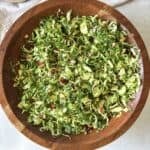
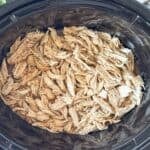
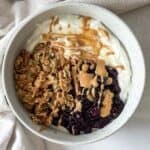
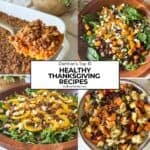
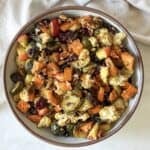
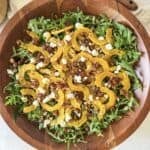
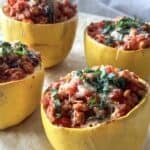


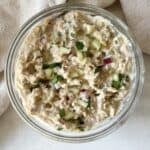
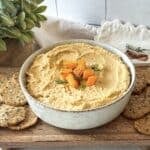
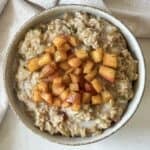
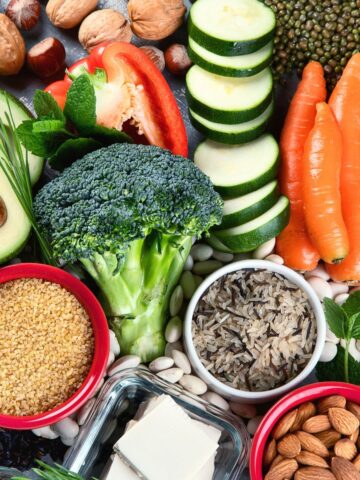


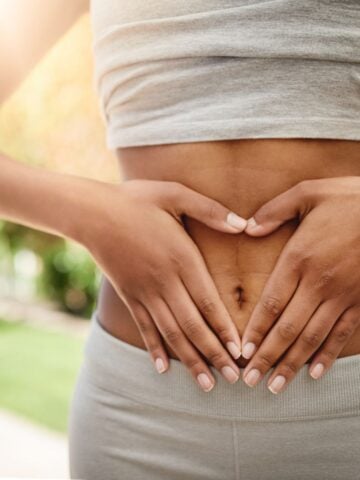



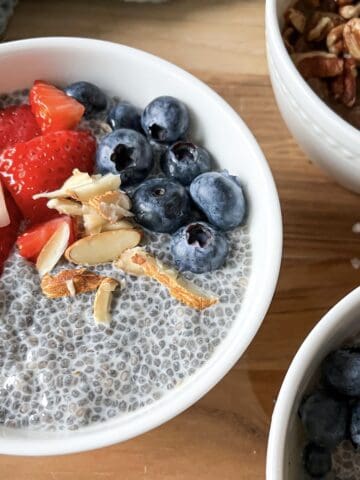
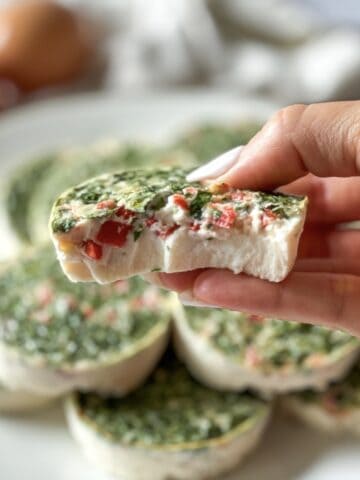
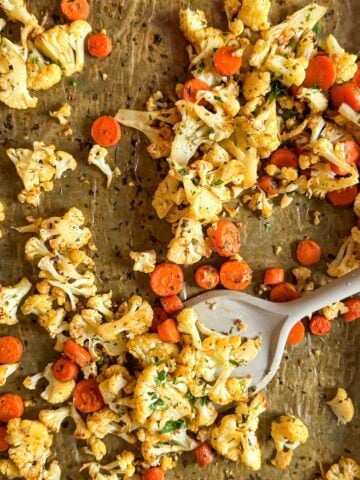
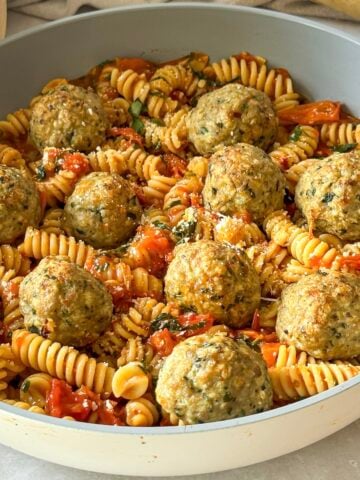
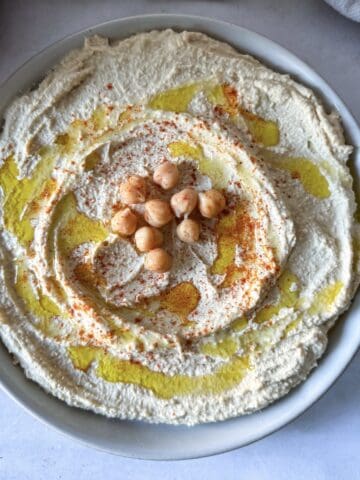
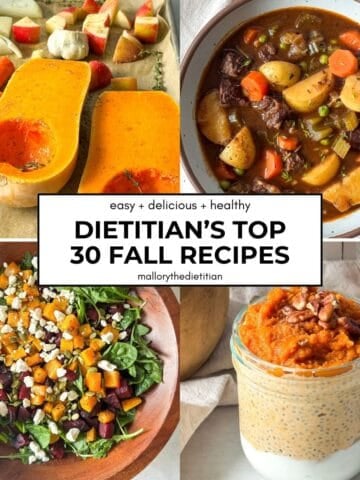


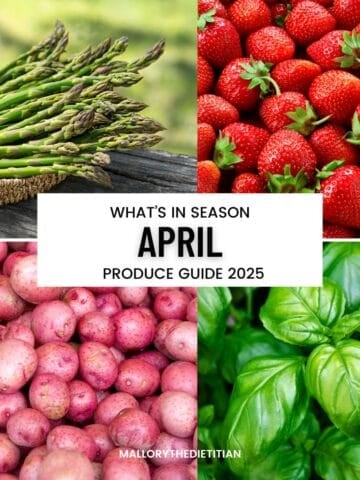
Comments
No Comments